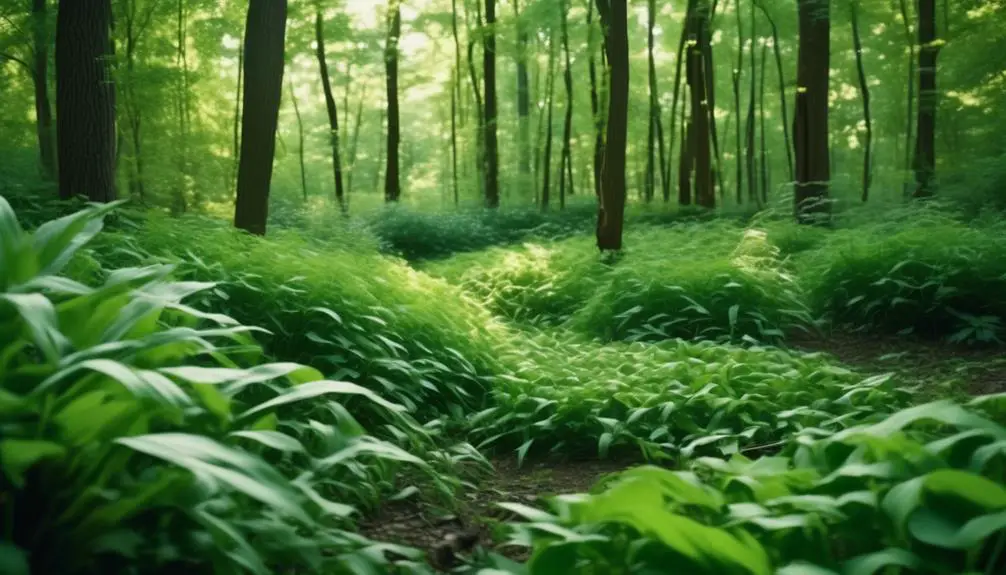Imagine stepping into the vast wilderness of Arkansas, where the landscape stretches out before you like an untamed canvas. As you explore this rich and diverse ecosystem, you might be surprised to discover the abundance of wild edible plants that flourish in this region.
From the humble acorn to the vibrant dandelion, these plants hold secrets that have sustained humans and wildlife for centuries. In this discussion, we will uncover the hidden treasures of Arkansas, revealing the fascinating world of wild edible plants and the wonders they hold.
So, prepare to embark on a journey of discovery, where each page unfolds a tantalizing tale of nature’s bounty.
Acorn
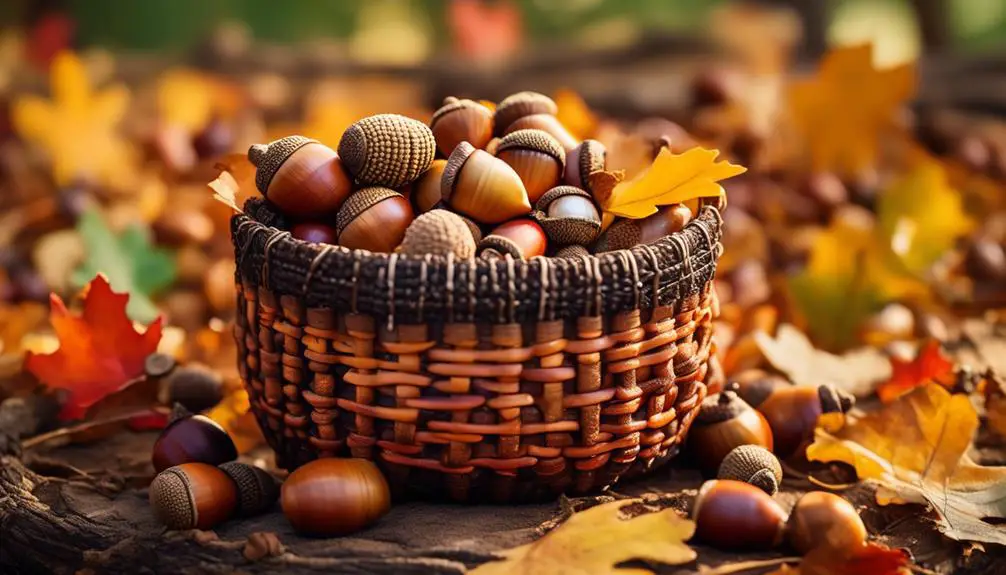
Acorns, found in the habitat of oak trees in yards and forested areas, can be a valuable source of food when properly prepared. These wild edible plants have been utilized by Native Americans for centuries. While acorns may be bitter, they can be transformed into a nutritious meal or flour through the process of grinding. Harvested in the fall, acorns provide essential nutrients and vitamins, enhancing food security and self-sufficiency.
To prepare acorns for consumption, first, collect ripe berries from the oak trees. Remove the caps and outer shells, being cautious of any areas that may have been sprayed with chemicals. Rinse the acorns thoroughly and then dry them in the sun or in a low-temperature oven.
Next, grind the dried acorns into a fine meal or flour using a food processor or mortar and pestle. This acorn flour can be used in various recipes, such as bread, muffins, or pancakes.
It is important to note that not all species of oak produce acorns suitable for consumption. Additionally, some acorns may contain high levels of tannins, which can be toxic if consumed in large quantities. Therefore, it’s crucial to properly prepare acorns and follow traditional methods used by Native Americans to remove the bitterness and ensure safe consumption.
Wild Asparagus
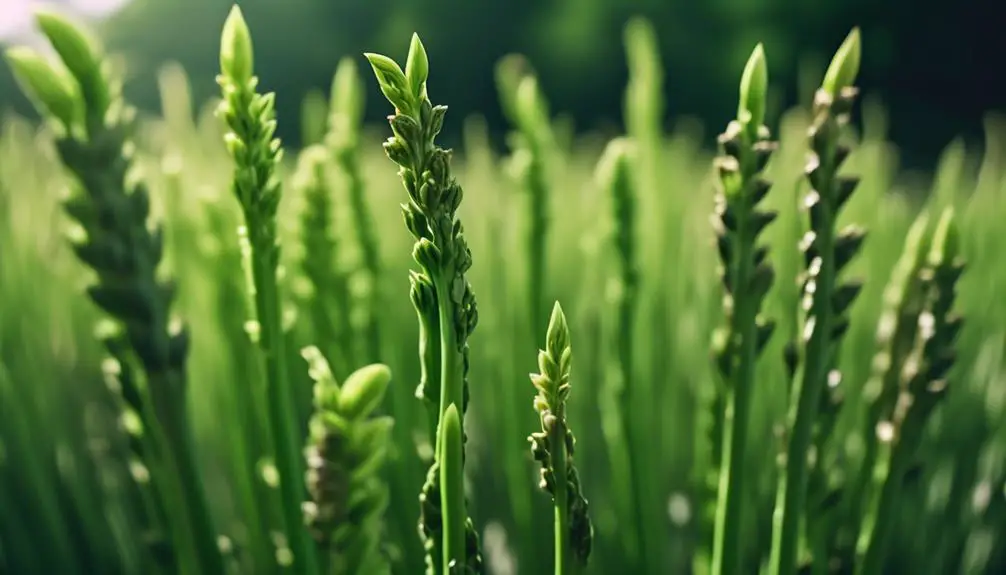
Wild asparagus, a nutritious and delicious wild edible plant, can be harvested in early spring near gardens or homesteads. Found in Arkansas, wild asparagus is a versatile plant that provides both food and flavor. The tender stalks of wild asparagus, similar to cultivated asparagus, are the edible parts of the plant. They can be eaten raw or cooked, making them a versatile addition to any meal.
When foraging for wild asparagus, it’s important to correctly identify the plant to avoid any potential hazards. It’s also crucial to avoid areas that have been sprayed with chemicals, as this can contaminate the plant and make it unsafe for consumption. Proper foraging techniques, such as selective harvesting and obtaining permission from landowners, are essential to ensure the sustainability of the plant population.
Incorporating wild asparagus into your diet can provide essential nutrients and enhance food security and self-sufficiency. This wild edible plant offers a unique and delicious flavor that can elevate your culinary creations. So, next time you’re out in the early spring near gardens or homesteads in Arkansas, keep an eye out for wild asparagus and enjoy its edible stalks either raw or cooked.
Wild Blackberries
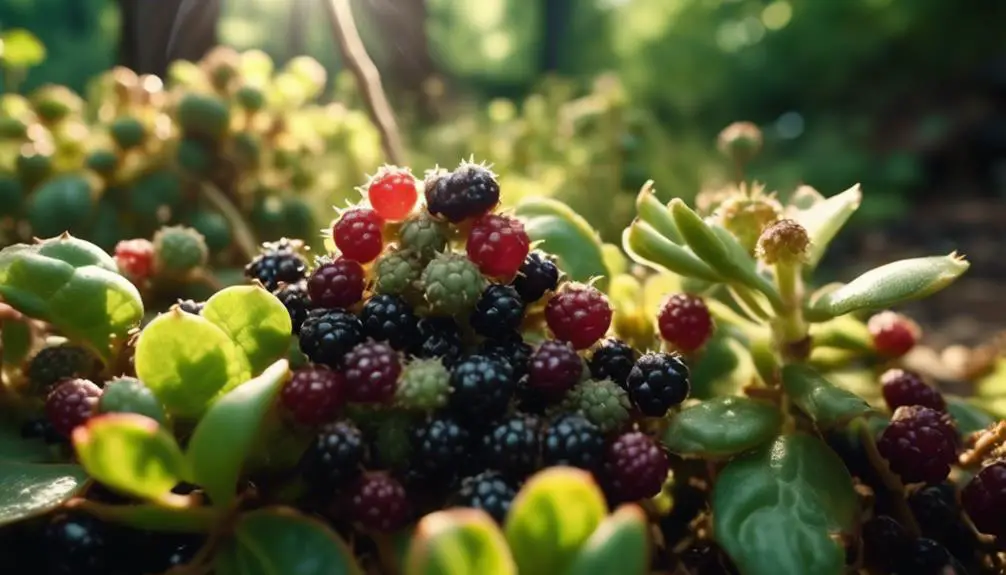
When exploring the wild edible plants of Arkansas, one delectable find after wild asparagus is the abundance of wild blackberries. These delicious berries can be found throughout the woods and along forest edges, making them easily accessible for foragers.
The ripe berries are edible and can be eaten raw or used in a variety of culinary creations, such as syrups, pies, and cobblers. Not only are the berries a tasty treat, but the leaves of the blackberry plant can also be used in various ways. For example, they can be brewed into a tea or used as a natural remedy for ailments such as diarrhea and inflammation.
Wild blackberries are typically harvested in mid-summer when they’re at their peak ripeness. However, it’s important to exercise caution when foraging for blackberries, as they often grow in wet areas where poison ivy may also be present. Additionally, it’s crucial to be mindful of areas that may have been sprayed with chemicals, as this could pose a health risk.
Cattail

Cattail, a versatile and sustainable wild edible plant, can be found along streams, ponds, and wet areas in Arkansas. It’s one of the many wild edible plants that can be foraged in the region. The different parts of the cattail plant, such as the male flower spikes, pollen, cattail head, and rhizomes, are all edible and can be harvested at different times of the year.
The flower spikes of the cattail can be cooked and eaten in a similar way to corn on the cob, providing a nutritious and delicious wild food option. The cattail heads can also be used as a vegetarian meat substitute, adding texture and flavor to various dishes. The leaves of the cattail can be boiled in water to make a nutritious tea.
Cattail is a valuable resource in Arkansas, providing a versatile and sustainable food source. It’s important, however, to learn how to accurately identify cattail and to harvest and prepare it properly to ensure a safe and enjoyable foraging experience.
With its abundance and nutritional benefits, cattail is a valuable addition to the wild edible plants that can be found in Arkansas. So, next time you’re exploring the streams and wet areas of Arkansas, keep an eye out for this versatile and sustainable wild edible plant.
Dandelions
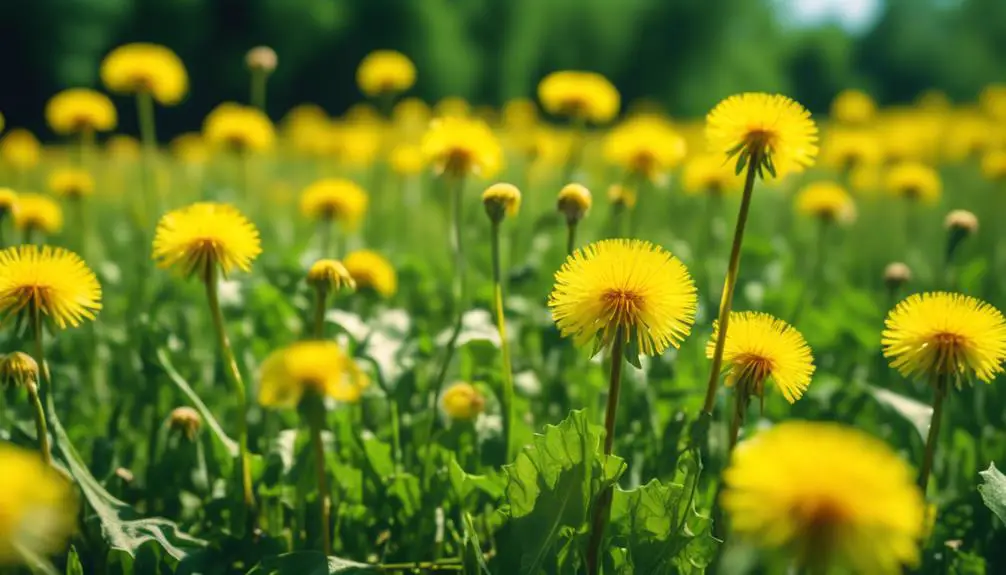
Dandelions offer a versatile and nutritious addition to foraging in Arkansas, with their edible leaves, flowers, and taproots available throughout the year. These wild edibles are relatively easy to find, often growing in lawns, making them a convenient and accessible option for foragers. However, it’s important to note that dandelion greens must be cooked before consumption to remove any bitterness.
The leaves of dandelions are often used in salads, providing a fresh and slightly bitter flavor. To use the leaves, simply harvest them from your front yard or any other area where dandelions are abundant. Make sure to wash them thoroughly before consuming.
Dandelion flowers can also be used in culinary preparations. However, it’s important to remove the green base of the flowers to eliminate their bitter taste. The remaining yellow petals can be used to add color and a mild sweetness to various dishes.
In addition to the leaves and flowers, dandelion taproots can also be harvested and used. These taproots have a slightly bitter taste and can be roasted or boiled to make a tea or coffee substitute.

